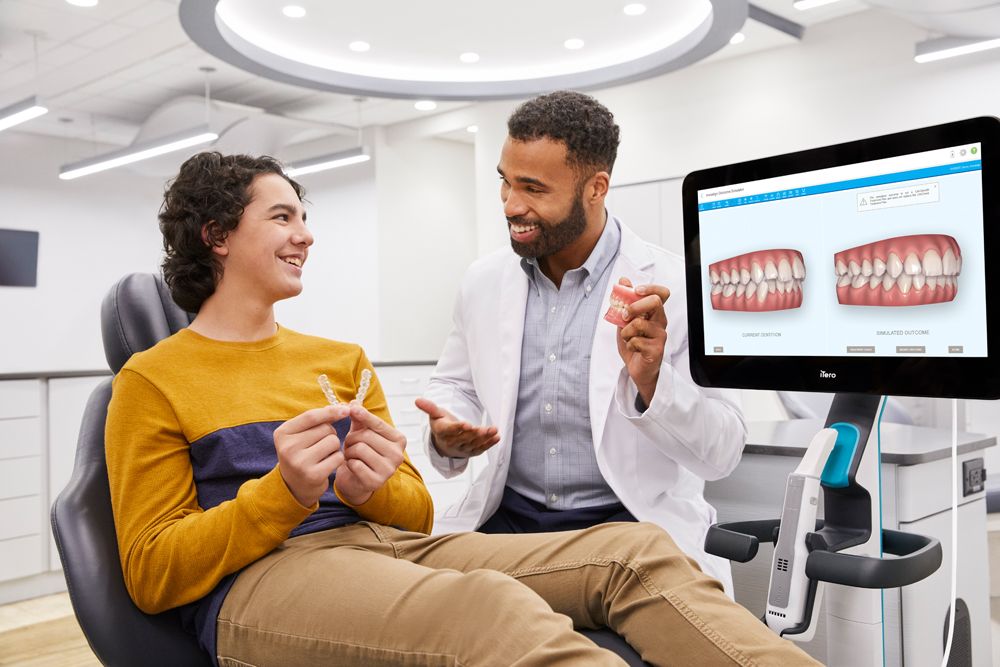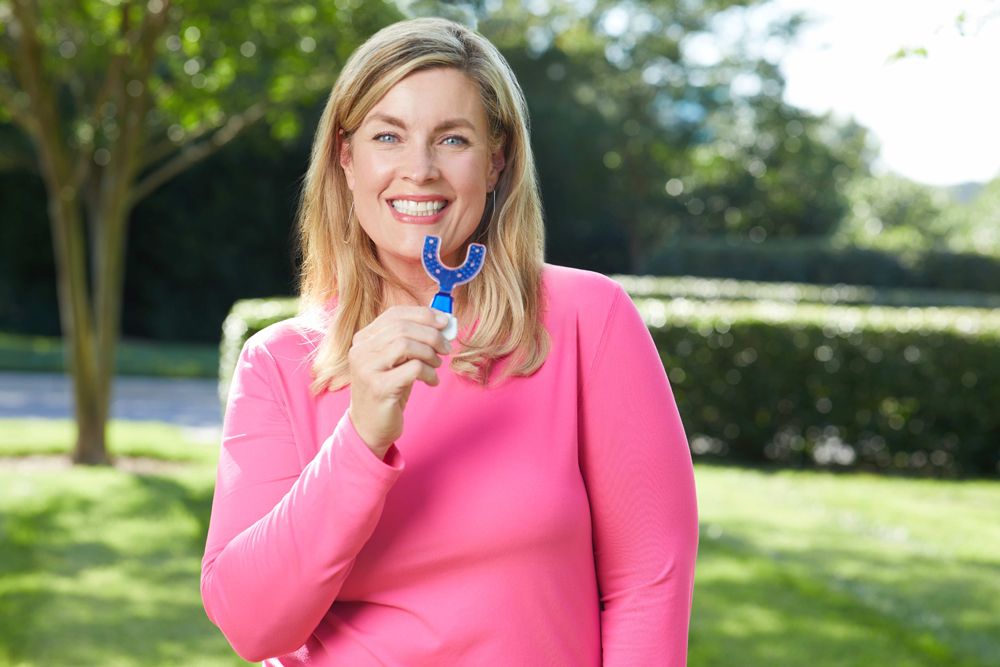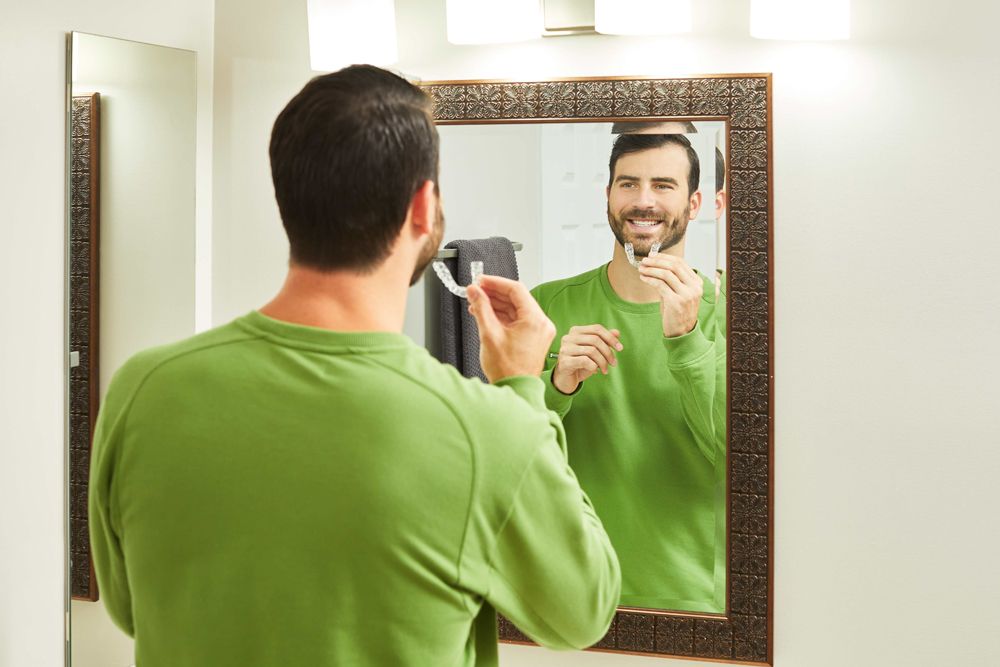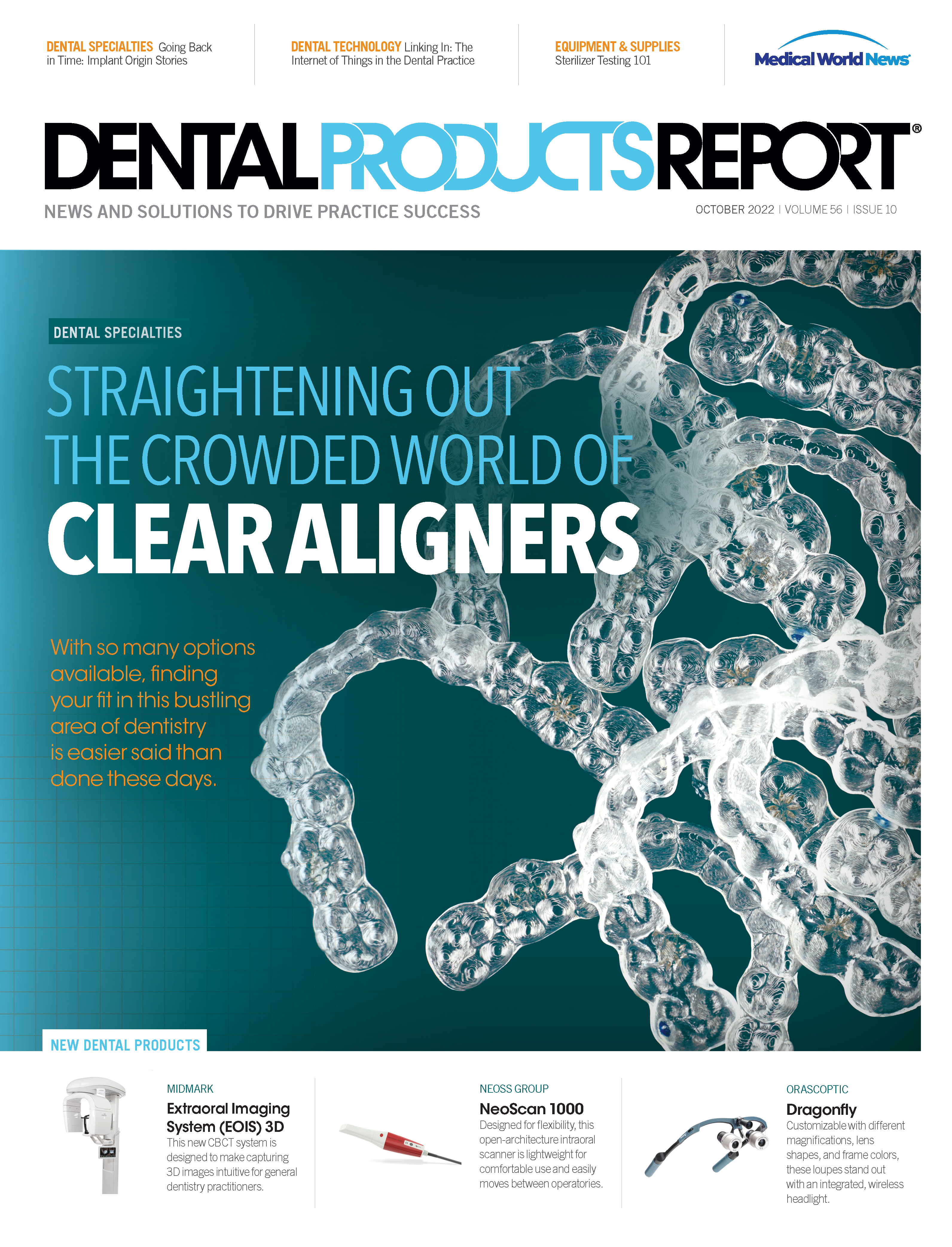Straightening Out the Crowded World of Clear Aligners
With so many options available, finding your fit in this bustling area of dentistry is easier said than done these days.

Today there are several companies offering clear aligner therapies, and they’re offering them in a wide variety of formats. Some companies assist GPs in the manufacture of aligners, others provide the aligners, some companies with orthodontists work directly with the clinicians, and others provide the services directly to the patient, with virtual input from dental professionals.
With increased awareness and demand, GPs need to have a basic understanding of orthodontics and be prepared when their patients ask them about clear aligners. The good news is there are plenty of options delivering solid results, and clear aligner companies have evolved dramatically in what they offer in terms of products, service, and support. These offerings are designed to benefit both patient and clinician.
Align Technology, a pioneer in clear aligners that dominated the market for years, works closely with dental universities and orthodontic schools to increase awareness. Not only are more patients interested in straightening their teeth, but GPs who provide basic orthodontic care typically open the door for additional treatments that aren’t feasible without first correcting crooked or crowded teeth.
To increase awareness in the orthodontic industry about the benefits of the Invisalign® system, Align Technology works with universities and orthodontic schools to include clear aligner treatment and the Invisalign system as part of the education curriculum. Partnering with universities enables:
- consistency within the curriculum with Invisalign digital modules;
- next-generation doctors to be Invisalign-ready; and
- the transition of clear aligner education from a corporate environment to an educational environment.
Align Technology strives to be an indispensable partner for transforming smiles and practices and improving patient health, offering best-in-class continuing education for doctors. Invisalign education topics include clinical education, practice development, office efficiencies, and digital workflows. With Align Faculty, Align Technology partners with the top Invisalign providers to build world-class education programs that help practices thrive with the Invisalign system.
Align Technology is celebrating 25 years of innovation this year. The company’s experience treating patients through the work it does with doctors allows it to help Invisalign-trained doctors prescribe and develop individualized treatment plans for their patients, right down to the movement of each tooth.
“We continue at the forefront of innovation in digital dentistry and orthodontics, helping doctors transform their practices using digital tools and technology to deliver great treatment experiences and outcomes to more than 13.4 million [individuals] worldwide,” Mitra Derakhshan, DDS, says. Dr Derakhshan is senior vice president of global clinical at Align Technology.
“The experience we have gained through years of research and development includes a wealth of information about individual tooth movements and types of malocclusions, including what is required to effectively and predictably move teeth. This unparalleled experience contributes to new insights, treatment planning ideas, feature sets, software protocols, and more. The breadth of our experience aids and accelerates our technology innovation every day with our doctor-led model, which requires direct interaction between patients and doctors.”
Trent Smallwood, DDS, a cosmetic dentist in Tempe, Arizona, was initially hesitant to become involved in orthodontics because his dental school education more than 25 years ago did not focus on straightening teeth. However, he has been offering clear aligner therapy for years and currently offers SmileDirectClub to treat his patients through the company’s partner network. Much of his early clear aligner training came from Align Technology, but he loves the fact that SmileDirectClub’s Comfort Sense™ aligners solution includes support from state-licensed doctors who review the 3D image, photos, and medical history to prescribe and manage the patient’s custom aligner treatment plan. He also knows that as more companies have entered the market, more affordable options have come along, allowing more patients to turn to clear aligner therapy.
“I think programs like this one offer more options to patients and allow doctors to aid in treating mild to moderate clear aligner orthodontic cases,” explains Dr Smallwood.
“A lot of my initial education was through Align Technology, which was one of the front-runners,” Dr Smallwood says. “Initially it was a big jump going from no [orthodontic] background. We had a [orthodontic] rotation we did [in school], but it was whispered in our ears, ‘Just leave this to the big boys. Leave the movement of teeth to the orthodontist.’” Because his teachers told him to focus on teeth and on crowns and bridges, Dr Smallwood “didn’t touch orthodontics for 10 years.”
Once he gave orthodontics a try about 18 years ago—starting with basic cases—he enjoyed it and never looked back. “I was able to make that transition from basic cases to more advanced cases with some training,” he says. “Initial information on clear aligners was significant, with so much information provided because orthodontics is such a different animal than our traditional GP type of dentistry. They were overwhelmed by it.”
Because of this, Dr Smallwood has seen several clinicians become overwhelmed and opt out of providing orthodontics at all. He believes this is where the SmileDirectClub Partner Network has made big strides, providing expert guidance to assist GPs new to clear aligner therapies.
“SmileDirectClub has changed that because they’ve been the early innovators and disruptors in the industry by providing steps 1, 2, and 3 to get you more comfortable with it,” he says. “The wonderful thing about the Partner Network is that you know the patients you hand off are in good hands. Their affiliated dentists and orthodontists have a lot of experience in clear aligner therapy, and they are the ones reviewing treatment plans and prescribing care. That expertise and support goes a long way when you’re just getting started with aligner cases. It can be a wonderful way for patients to receive treatment and doctors just delving into clear aligner therapy acclimate to clear aligner orthodontics.”
Some early adopters of clear aligners might have gotten a little training and a walk-through, but then the execution was on the clinician. Dr Smallwood says the SmileDirectClub Partner Network changes that by referring the case to the company’s network of teledentists and removing the liability for the Partner Network doctor.
They’ve taken on a lot of the education and clinical support services and are able to give these providers wanting to just step into the idea of aligners a far easier way to get started than what was previously available, he says.
SmileDirectClub recently announced the complete transition of its second-generation retainer manufacturing technology in the company’s FDA-registered Smile Labs in Antioch, Tennessee. The company’s upgraded retainer manufacturing lines feature the patented laser technology and automations leveraged to produce SmileDirectClub’s Comfort Sense™ aligners. The laser technology results in precision-cut retainers that fit more comfortably while maintaining proper tooth alignment and healthy positioning, and the manufacturing automations continue to increase the company’s efficiency and productivity. Thanks to this advanced technology, Smile Labs can now produce twice as many aligners and retainers with approximately one-third of the manpower, increasing productivity by 225%, according to SmileDirectClub.
Exciting Times
With the advances in orthodontics and the ability for GPs to add this service to their practice, more and more GPs are doing just that. More patients want straighter smiles, and more GPs can get started delivering the popular clear aligner therapies.
Align Technology works with universities and orthodontic schools to increase education and awareness of the benefits of the Invisalign system.

“It is a very exciting time in orthodontic treatment, especially with clear aligner therapy. The confluence of digital advancements, patient awareness, and the expiration of old patents has brought minor tooth movement to the forefront of our profession,” says Brian Gray, DDS, chief dental officer of Candid. “Twenty-four years ago, orthodontists were concerned that GPs would take a slice of the pie and were fearful it would hurt the specialty. That didn’t turn out to be the case. In fact, the orthodontic market is expected to grow 4-fold between 2020 and 2028, and all providers will benefit.”
Clear aligners are a no-brainer for restorative dentists, especially the new generation of young dentists raised in the digital world. “Dentistry has also embraced a more comprehensive approach to treatment planning, with [orthodontics] being a cornerstone,” Dr Gray adds. And that, of course, leads to the final piece of the puzzle: Patients demand excellent esthetics, but without proper tooth position, beautiful ceramic restorations become exposed to forces that cause premature failure; form follows function. By putting teeth in the most ideal position, you can build smiles that last a lifetime.
Candid boasts case management assistance and after-hours patient support, along with precision aligner manufacturing designed to achieve precise tooth movements. The company arms customers with best-in-class orthodontic support and dental technology that seamlessly integrates into the practice workflow at no up-front cost. They are dedicated to helping practices identify and manage more cases of malocclusion than ever before with predictable, confident movements through their treatment planning software and ongoing on-site training and virtual support. With clinical expertise and breakthrough digital technology, Candid offers a level of on-demand clinical support and advice equivalent to an orthodontist in your practice 5 days per week, the company says.
Case Management and After-Hours Patient Support
Candid Monitoring™ technology is designed to gives you unprecedented remote oversight by enabling patients to send you high-resolution images of their teeth, and it requires no setup on the practice side. These virtual check-ins bring you closer to your patients, drive patient adherence, reduce refinement rates, and save chair time without compromising your level of care.
Additionally, Candid’s 24-7 support team is an extension of the practice, handling all nonclinical patient issues with live chat and an artificial intelligence (AI) technology called CandidApp, a top-rated app in teledentistry. Candid frees up the dental team’s time to focus on growing the practice.
Precision Aligner Manufacturing
Candid achieves highly accurate tooth movement by manufacturing aligners in state-of-the-art production facilities using industry-leading Carbon 3D printers and clear, comfortable, stain-resistant Zendura FLX materials. Candid’s precision aligner manufacturing process, the patent-pending CandidRx™, and an 80% patient adherence rate mean that 3 of 4 Candid clear aligner patients don’t needed any posttreatment refinements, according to the company.
Social media and increased patient awareness continue to play big roles in a larger population of patients desiring a better-looking smile. “Patients, especially baby boomers, are wanting better smiles, especially with social media and all the close-up photography these days,” Dr Gray says. “Dentists have stepped up their game by offering great ways to improve a patient’s looks and function. I have had cases where we opted out of placing veneers because the aligner case turned out so well. I have also had cases where a patient completes treatment and says, ‘What can we do to fix these chips or stains?’ Or maybe, ‘Things look so good, we should replace these 2 old crowns.’ We work up every case comprehensively, so I have those items built into the treatment plan. That way it isn’t an afterthought, and the patient knows we have been working from an ideal platform since the start. It’s a great confidence builder, and to top it off, I didn’t have to sell the patient on elective treatment. Everyone wins.”
Dentsply Sirona, a pioneer in the dental materials, CAD/CAM, and equipment side of things, is another big player in clear aligners with its SureSmile® Clear aligners. These clear aligners are made by experts using the latest technology and proven materials. Unique features allow for personalization in even the most challenging cases. Precise processing of data and thorough quality control are designed to ensure outstanding fit and comfort, excellent durability, and aligners so transparent they’re hard to detect.
Matt Coggin, senior vice president of clear aligners for Dentsply Sirona, believes the combination of more patients wanting better esthetics coupled with a greater understanding of how untreated malocclusions may impact oral, physical and mental health are paving the way to a greater demand. “It’s very clear the market is driven by a wants-based esthetic approach, which has helped drive the aligner adoption to accelerate the ortho category over the past couple of years,” Coggin says. “As you get into digitization and democratization of different types of software, it has allowed generalists to really talk to their patients—their adult patients in particular—about looking at potential solutions around straightening their teeth. That has greatly accelerated growth in the market. It’s continuing to create a strong environment when you look at the dentists who want to get involved in this. Patients, mainly adults, aren’t interested in putting brackets and wires in their mouth. So they’ve looked at the clear aligner option as a good option for them.”
Evolving patient expectations, improvements in oral health, and rapid developments in technology have driven dentistry into a new era. With Invisalign Go treatment, GPs have a solution that allows them to integrate clear aligner therapy into their comprehensive treatment plans, according to Dr Derakhshan. “It’s about giving patients holistic treatment options thanks to the help of digital technology, with Align Technology supporting doctors throughout a comprehensive onboarding program. General dentists can deliver predictable results with the Invisalign system’s unique combination of 3 patented technologies: SmartTrack material, SmartForce features, and SmartStage® technology.”
Align Technology stresses doctor-delivered treatment. Patients can only start Invisalign treatment with an Invisalign-trained dentist or orthodontist. That ensures patients have an initial exam and ongoing, personalized care and monitoring from the doctor of their choice. With a doctor’s care, Invisalign treatment could be an option for a wide variety of patients at any age and with varying degrees of treatment complexity, the company says.
“Align [Technology] has a broad Invisalign product portfolio that enables doctors to [manage] approximately 90% of malocclusion from adults to teens to kids as young as 6 years old. Our digital technology is expanding the orthodontic market globally with the Invisalign system, the most advanced clear aligner system in the world, and over 13 million Invisalign patients treated globally,” says Dr Derakhshan. “Our market opportunity remains massive, with approximately 10% share of 21 million annual orthodontics case starts and 500 million potential patients worldwide. Our goal is to help dentists participate in a new and larger market by investing in innovative products and building brands to drive millions more [patients] to their practices.”
It’s not a small number of companies joining Align Technology. Many companies, including 3Shape, Orthosnap, orthobrain, OraPharma, and On Demand Orthodontist (ODO), are making big pushes to have an impact in the marketplace. orthobrain’s SimplyClear clear aligner solution is featured on Page 14 in this issue. And it seems as if a new player pops up every month.
For example, ODO is working with established brands like Ormco’s Spark Clear Aligner System and Dental Monitoring to assist dentists in delivering successful clear aligner treatments. ODO provides end-to-end aligner treatment guidance materials so clinicians can profitably deliver smile transformations to malocclusion cases while saving chair time.
Susan Prater Kudlats, DDS, a cosmetic and digital dentist in Jacksonville, Florida, has tried a few clear aligner solutions but is sticking with ODO for now and has been using their system for about a year. High costs and lengthy chair time were her biggest complaints about past companies she tried. “In the past, it seemed like you were starting cases over with a patient,” Dr Prater says. “I found out about ODO, and it’s been great. You have an orthodontist who helps with the treatment plan of the case to keep an eye on things. It saves so much chair time that way. I have happy customers, and I love it because the patients don’t have to come in often.”
Like many other GPs, Dr Prater didn’t have a total grasp of orthodontics while in school. “We don’t learn much about orthodontics in dental school, so it was a little scary at first,” she says. “I was a little hesitant, but there are so many great courses out there. I took a couple of courses because it’s nice to be able to do the bread-and-butter basic cases. That’s how I got my feet wet; I was doing very basic cases at first.”
When she heard that world-class orthodontists plan the ODO cases for you, Dr Prater “went to test it out, and it’s been really great.” She takes on more complex cases now, but wants clinicians to remember what’s most important: the patient’s long-term oral health. “It’s important when you’re doing any type of cosmetic case to remember it’s not just about the look of it. Form and function are most important. You want to give the patient the best long-term functionality,” Dr Prater says.
The SureSmile VPro high-frequency vibration device is described as a simple 5-minute at-home treatment that may improve aligner seating and accelerate tooth movement.

This may mean turning away a patient’s request for veneers when the best option may be to straighten the teeth with aligners and consider a less invasive procedure. “It allows for dentists to practice more responsible esthetic dentistry,” Dr Prater explains. “A patient comes in and wants veneers, and their teeth are a little out of alignment. I can tell them, ‘If I can move your teeth a little and straighten them, you might be a candidate for prepless veneers.’”
With advances in materials and software as well as support from companies such as ODO, she says this is a great time for dentists to provide basic orthodontic treatments. “It is super exciting,” Dr Prater says. “There is so much you can do, and there’s so much to learn right now. It’s nice to have an orthodontist there to help. If you did all the planning yourself, that of course takes time.”
Dr Prater is taking courses on advanced digital workflows and plans to study more advanced orthodontics down the road. But for now, ODO having her back means she can be confident providing successful clear aligner treatment to her patients. “I have a thirst to learn more, and we want to do it all at once,” she says of clinicians’ desire to better themselves. “So it’s nice to know that I have [orthodontics] in the bag for now. It’s like having a specialist in your office.”
Another benefit of ODO is Dental Monitoring, the company’s AI-powered platform and patented technology that detects and monitors over 130 oral observations. This remote monitoring solution is designed to let you know exactly when a patient needs an in-person appointment. It drives patient adherence, optimizes chair time, and boosts engagement with the patients. It also gives patients the convenience of connecting with your practice through the Dental Monitoring app. Practices can send instructions and friendly reminders as often as needed.
Alyssa Carter, DDS, an orthodontic adviser and team member of ODO, is a key opinion leader for Ormco and Dental Monitoring and educates on back-office efficiency and digital treatment with aligners. She agrees with Dr Prater’s idea that ODO is like having an orthodontist around all the time, ensuring GPs are designing their cases properly and monitoring them to deliver optimal results. “I like to describe it as a virtual orthodontic associate,” Dr Carter says. “The technologies have become more advanced, and I think the foundation, whether we’re talking about aligners or brackets, still requires a solid diagnosis and treatment plan. The rest of it is tools at our fingertips.”
Whether clinicians are adding to orthodontic education and choosing a clear aligner solution they can control or taking advantage of ODO’s experienced orthodontists to handle the design phase, today’s material and software offerings make it easier for them to deliver strong results. “With the digital workflow we have now, we’re able to deliver predictable outcomes and guide GPs so they can continue to develop positive relationships with patients,” Dr Carter says. “The technological advances have just made it better for us. It’s more convenient and more efficient, and it makes our lives better.”
She has completed many cases that have dramatically moved teeth and corrected patient’s misalignment with the Spark Clear Aligners System. The nearly invisible aligners are made with TruGEN clear aligner material. They are designed to be clearer, more comfortable, and stain less, according to the manufacturer. In addition, they’re designed for more efficient and effective tooth movement.
The SmileDirectClub’s ComfortSense aligners solution includes support from state-licensed doctors who review the 3D image, photos, and medical history to prescribe and manage the patient’s custom aligner treatment plans.

Dr Smallwood suggests every GP provide clear aligner options for basic cases. “A big part of what I’ve done is integrate restorative and orthodontic clear aligner therapy so I can move teeth into a more ideal position and restore them with less invasiveness,” Dr Smallwood says. “It’s a great way to help the patient in a conservative way.”
Clear aligners have evolved in the past few years, with some direct-to-consumer approaches. “Direct-to-consumer marketing is building clear aligner awareness with patients and getting them excited on what can be done with their smile, either through telehealth or in-office with their existing doctor,” Dr Smallwood adds. “So, there are so many things that we can do these days. There’s a lot of interest from patients and doctors alike in the area of clear aligner options. I feel like it’s really been trumped by a lot of these new innovations, primarily driven by clear aligner therapy. So yes, absolutely, I would be disappointed if I came across the doctor that hasn’t worked into some clear aligner therapy into their practices. I mean not everything’s for everybody. I wouldn’t quite feel that way for doctors that don’t do implants, I feel that is far more of a difficult skill to attain over clear aligner orthodontic therapy.
“But with clear aligner therapy, there is ample opportunity in a growing category. I feel as long as you’re not doing anything outside of the guidelines, I feel like you just can’t fail.”
More on Adherence and Monitoring
Dr Gray believes Candid’s monitoring system and new manufacturing facilities make the CandidPro option an ideal choice for today’s dentists and patients looking into clear aligners.
“I see a number of unique advantages Candid offers over other aligner companies. The biggest is their monitoring system,” he explains. “Designed to remotely assess a patient’s progress every 2 weeks, without the practitioner needing to perform live evaluation, [the monitoring system] has been a game changer. Licensed orthodontists monitor every step, providing guidance and regular communication with the patient. If things are off, I get a notice and can step in. If things are on track, I am able to focus on the practice and other patient’s needs.”
Dr Gray adds that he can pull up the patient’s monitoring journey at any time and see what’s going on. This allows him to be prepared when he sees a patient at a hygiene recare visit: “[I’ll say], ‘I’m glad I had you hold in aligner number 6 an extra week. It helped to keep things on track.’ Then I’ll get a reply: ‘I went away on vacation and wasn’t as [adherent] as I should have been. Glad you noticed.’” This helps build confidence in the doctor-patient relationship, and everyone wins.
There are other benefits with Candid such as the new manufacturing facilities, major technology advancements, and advanced digital platforms. “The one thing that stands out is the team culture. To a person, we are constantly focused on how we can make things better. By approaching every challenge with a proactive attitude focused on the doctor and the patient, Candid is playing the long game.”
Align Technology strives to be an indispensable partner for transforming smiles and practices and improving patient health with high-quality continuing education for doctors. Invisalign education topics include clinical education, practice development, office efficiencies, and digital workflows. With Align Faculty, Align Technology partners with the top Invisalign providers to build world-class education programs that help practices thrive with the Invisalign system.
In addition, Invisalign-trained doctors can access an abundant library of digital education content from the Invisalign Doctor Site, including videos, how-to-tutorials, information about new products, and clinical evidence such as white papers.
How to Decide?
Dr Gray says clinicians, especially GPs new to orthodontic services, should do a little homework and find out what solution or solutions best fit their practice and patients. “They should evaluate the different systems out there and pick 1 or 2 that will serve all their needs. Focus on predictability, reliability, and product quality,” Dr Gray says. “But most of all, look at integration in your practice. Clear aligner [orthodontics] needs to be well run, simple and efficient.”
Dentsply Sirona’s SureSmile® Aligners can help you address your patients’ requests for healthier smiles without them ever leaving your chair.

The entire system should be intuitive, with routine standard operating procedures designed for full office integration, he adds. Training and practice immersion are a must so every team member is on the same page. “Reduce the stress. Use a product that works well in your practice. One that minimizes chair time and actual tooth movement planning but delivers the expected result. This should be easy and fun for all parties involved.”
Coggin feels Dentsply Sirona’s comprehensive digital dentistry suite of solutions lends itself to delivering clear aligner therapy to more patients. Research indicates that when teeth are straightened and crowded teeth are corrected, patients’ airways are improved. As more clinicians add CBCT to their practices, the capabilities of these advanced digital workflows take off, Coggin says. “It’s very rare that a patient comes into a dental practice, and they only have 1 thing that they need,” Coggin explains. “A patient may need 5 things, or maybe a patient wants 2 things but they really need just 1. So how do we create tools that really help the community, the ecosystem of dentistry be able to decide how best to treat that patient’s immediate need as well as diagnose and treat the underlying cause and ultimately deliver the best customer experience for that patient and for the dentists who are providing that care?”
Dentsply Sirona’s DS Core is a platform combining products, services, and technology to help clinicians shape the future of their practice and focus more on what matters: treating patients. Users can benefit from cloud storage and case file-sharing solutions and access high-quality service offerings for their equipment and dental design needs. SureSmile clear aligners is just another big piece to the company’s digital dentistry puzzle.
“Dentsply Sirona’s first interconnected, digitally advanced platform is designed to fully support you throughout the entire patient journey, from diagnosis to final care or treatment,” Coggin says. “This enables you to utilize seamless workflows, foster collaboration with partners, and keep abreast of the latest developments in digital dentistry. DS Core is easily expandable through purchases of equipment and subscription options for additional clinical services and applications, ensuring the continuous evolution and growth of your practice.”
Manufacturers believe this becomes a real accelerator in helping dentists adopt different specialty procedures such as clear aligners or implants.
“There are many great resources for GPs to learn about the latest developments in digital dentistry, including industry events. Every other year, Align [Technology] hosts its Invisalign Summit for GPs, the ultimate learning experience for Invisalign doctors and teams looking to transform their digital practices, with the most peer-to-peer presentations of any Invisalign education event,” Dr Derakhshan says.
SureSmile was prominent at Dentsply Sirona World, Sept. 15 to 17.
No one says it will be easy for clinicians to investigate every clear aligner option. However, they should know there are many good choices out there and should not be afraid to add orthodontics to their offerings if they have yet to do so.

ACTIVA BioACTIVE Bulk Flow Marks Pulpdent’s First Major Product Release in 4 Years
December 12th 2024Next-generation bulk-fill dental restorative raises the standard of care for bulk-fill procedures by providing natural remineralization support, while also overcoming current bulk-fill limitations.